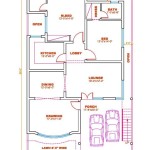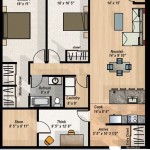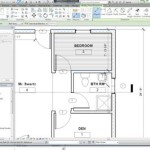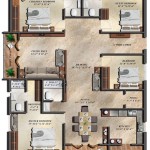What Military Plane Just Flew Over My House In Utah?
The airspace over Utah, like that of many states in the United States, is frequently used for military training exercises, transportation of personnel and equipment, and other national defense activities. Consequently, residents often observe various military aircraft flying overhead. Identifying a specific aircraft and understanding its purpose can be challenging, but several key factors and resources can help to decipher the mystery. This article aims to provide a comprehensive overview of the types of military aircraft commonly seen in Utah, potential reasons for their presence, and methods for identification and information gathering.
Utah's geographical location and proximity to several military installations significantly contribute to the volume of military air traffic. Hill Air Force Base, located near Ogden, is a major Air Force installation and a primary reason for frequent military aircraft sightings. The Utah Test and Training Range (UTTR), one of the largest over-land ranges in the United States, further amplifies military air operations. These facilities, among others, create a dynamic environment where various aircraft, from fighter jets to transport planes, are routinely observed.
Common Types of Military Aircraft Observed in Utah
A foundational step in identifying a military aircraft is to understand the types most likely to be operating in the region. Based on proximity to military bases and known training routes, certain aircraft are more commonly observed than others. Below is a list of some of the most frequently seen types:
F-35 Lightning II: Stationed at Hill Air Force Base, the F-35 is a fifth-generation multirole fighter known for its stealth capabilities, advanced sensors, and air-to-air and air-to-ground combat capabilities. Its distinctive shape and often loud engine noise make it relatively recognizable. The F-35 plays a critical role in maintaining air superiority and performing precision strike missions. Units based at Hill AFB regularly conduct training flights, contributing to numerous sightings across northern Utah.
F-16 Fighting Falcon: While gradually being replaced by the F-35 in some roles, the F-16 remains a versatile and widely used fighter aircraft. It is characterized by its single engine, bubble canopy, and agile performance. It is possible to observe F-16, though sightings are less frequent than the F-35 due to base assignments and evolving fleet compositions. F-16s conduct a wide range of missions, including air defense, close air support, and precision bombing. They are still actively involved in training exercises within the UTTR.
A-10 Thunderbolt II: Also known as the "Warthog," the A-10 is a close air support aircraft designed specifically to attack tanks, armored vehicles, and other ground targets. Its distinctive appearance, featuring a large Gatling gun mounted in the nose and a heavily armored cockpit, makes it easily identifiable. While not stationed in Utah, A-10s regularly participate in training exercises at the UTTR, simulating battlefield conditions and practicing coordination with ground forces. Its relatively slow speed and low altitude flight profile often make it readily visible.
KC-135 Stratotanker: The KC-135 is an aerial refueling tanker that plays a crucial role in extending the range and endurance of other military aircraft. It is a large, four-engine aircraft that provides in-flight refueling capabilities to fighters, bombers, and transport aircraft. Its presence often indicates ongoing training exercises or long-distance deployments involving other military aircraft. While not directly involved in combat operations, the KC-135 is essential for maintaining global airpower projection capabilities. Its size and the presence of a refueling boom under the fuselage are distinctive features.
C-130 Hercules: The C-130 is a versatile military transport aircraft used for a wide range of missions, including cargo transport, troop deployment, medical evacuation, and humanitarian aid. It is a four-engine turboprop aircraft known for its ruggedness and ability to operate from short and unimproved runways. C-130s are frequently observed transporting personnel and equipment to and from military bases in Utah and participating in a variety of training exercises. Its high-wing configuration and distinctive sound differentiate it from other transport aircraft.
Various Helicopters: Numerous types of military helicopters, including the AH-64 Apache, CH-47 Chinook, and UH-60 Black Hawk, may also be observed in Utah. These helicopters are used for a variety of missions, including attack, transport, and search and rescue. Their presence is often related to training exercises at the UTTR or support of ground-based military operations. Determining the specific type of helicopter requires closer observation of its size, shape, and markings.
Reasons for Military Aircraft Overflights
Understanding the potential reasons behind military aircraft overflights is crucial for contextualizing sightings. Military aircraft do not simply fly randomly; their operations are governed by specific training schedules, mission requirements, and national defense priorities. Here are some common reasons for these overflights:
Training Exercises: The UTTR provides a vast and unrestricted airspace for military training exercises. These exercises may involve air-to-air combat, air-to-ground attack, electronic warfare, and other scenarios designed to prepare military personnel for real-world deployments. Aircraft from various branches of the military, including the Air Force, Army, and Marine Corps, regularly participate in these exercises.
Air National Guard Activities: The Utah Air National Guard operates from various locations across the state and conducts routine training flights to maintain readiness. These flights may involve local area familiarization, navigation exercises, and proficiency training in specific mission areas. The Air National Guard plays a vital role in homeland defense and disaster response.
Transportation of Personnel and Equipment: Military transport aircraft, such as the C-130, are frequently used to transport personnel and equipment to and from military bases in Utah. These flights may be related to troop deployments, equipment maintenance, or logistical support for ongoing operations.
National Security and Defense Missions: In certain cases, military aircraft overflights may be related to national security and defense missions that are not publicly disclosed. These missions may involve surveillance, reconnaissance, or rapid response to potential threats. Information regarding these activities is typically classified to protect national security interests.
Interstate Transit: Utah's airspace may be used by military aircraft transiting between different bases and training areas across the country. These aircraft may be simply passing through the area while en route to their final destination. The flight paths and altitudes of these aircraft are typically coordinated with air traffic control to ensure safety and efficiency.
Methods for Identifying Military Aircraft
Identifying a specific military aircraft can be challenging, but a combination of observation, research, and online resources can enhance accuracy. Here are several methods that can be employed to identify the aircraft in question:
Visual Observation: Pay close attention to the aircraft's physical characteristics, including its size, shape, number of engines, wing configuration, and any distinctive markings. Note the color scheme and any visible insignia. The more detailed the observation, the easier it will be to narrow down the possibilities. Taking photographs or videos can be helpful for later identification.
Sound Recognition: Different types of aircraft produce distinct sounds. Jet engines have a different sound signature than turboprop engines, and the pitch and intensity of the sound can vary depending on the aircraft's speed and altitude. Familiarizing yourself with the sounds of common military aircraft can aid in identification. Sound recognition can be particularly useful when the aircraft is observed at night or in low-visibility conditions.
Online Flight Trackers: Several websites and mobile apps allow users to track aircraft in real-time. These platforms often display information about the aircraft's type, origin, destination, and altitude. While military aircraft may not always be visible on these trackers due to security protocols, some information may still be available. ADS-B Exchange is often favored over FlightRadar24 because it displays less restricted data. It's important to use these trackers responsibly and respect privacy concerns.
Aircraft Identification Guides: Field guides and online resources that provide detailed information about different types of military aircraft can be invaluable for identification. These guides typically include photographs, diagrams, and technical specifications to help users distinguish between various aircraft. Many of these resources are available for free online or can be purchased in print format.
Military Base Public Affairs Offices: If you have a specific concern or question about military aircraft activity in your area, contacting the public affairs office at a nearby military base may be helpful. These offices can provide information about scheduled training exercises, community outreach programs, and other activities that may impact local residents. However, information regarding classified operations will not be disclosed. Hill Air Force Base is a primary resource for inquiries related to military aircraft in northern Utah.
Local News and Media: Local news outlets and media organizations often report on military activities in the area, including training exercises and air shows. Following these outlets can provide valuable information about upcoming events and potential aircraft sightings. Additionally, local aviation enthusiasts may share information and photographs on social media platforms.
By combining these various methods, residents can significantly improve their ability to identify military aircraft flying over their homes in Utah and gain a better understanding of the reasons behind these overflights. Remember to prioritize safety and respect privacy concerns when observing and researching military aircraft activity.
:quality(70)/cloudfront-us-east-1.images.arcpublishing.com/archetype/RBKBNTDM35FTVNRX5PZBQIOWLU.jpg?strip=all)
The F 117 Is Stealthy Fighter You Can Now See For Yourself

What Plane Just Flew Over My House Here S An Easy Way To Find Out

Neighbors Of Hill Air Force Base Desperate For Solutions To Destructive Jet Noise

Aerial Spray Unit Tests Its Life Saving Mission On New C 130j

F 35 Elephant Walk Watch 52 Fighter Planes Fly At Once
Why Can T Military Aircraft Fly Over Populated Areas Quora

This Was Once A Top Secret Fighter Now You Can See It For Yourself

High Altitude Balloon Intercepted By Us Fighters Over Utah A Likely Hobby Norad Abc News
Small Balloon Intercepted By Norad Fighter Jet Over Utah Ap News
:quality(70)/cloudfront-us-east-1.images.arcpublishing.com/archetype/6WTPB2RAQJBN5NGQEQKSOJWDAA.jfif?strip=all)
Air Force F 35 Fighter Jet Crashes In Utah Pilot Safely Ejects
Related Posts








